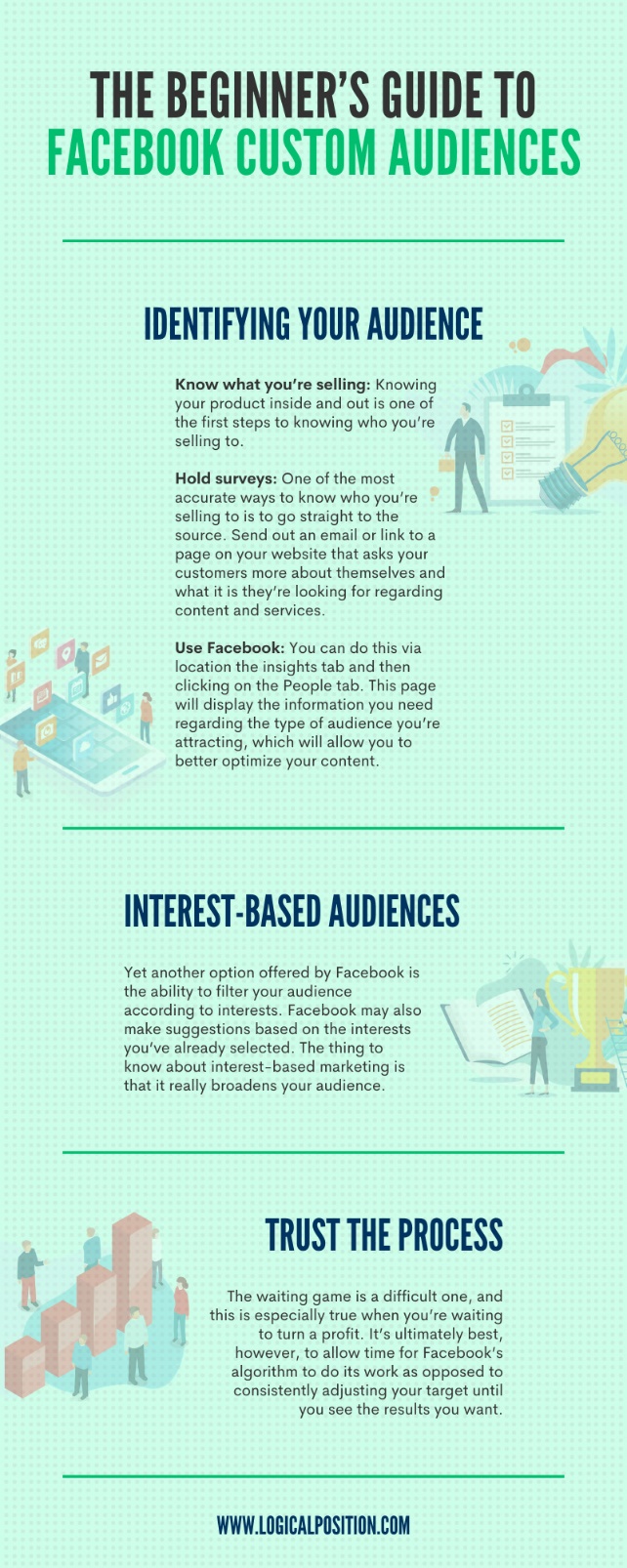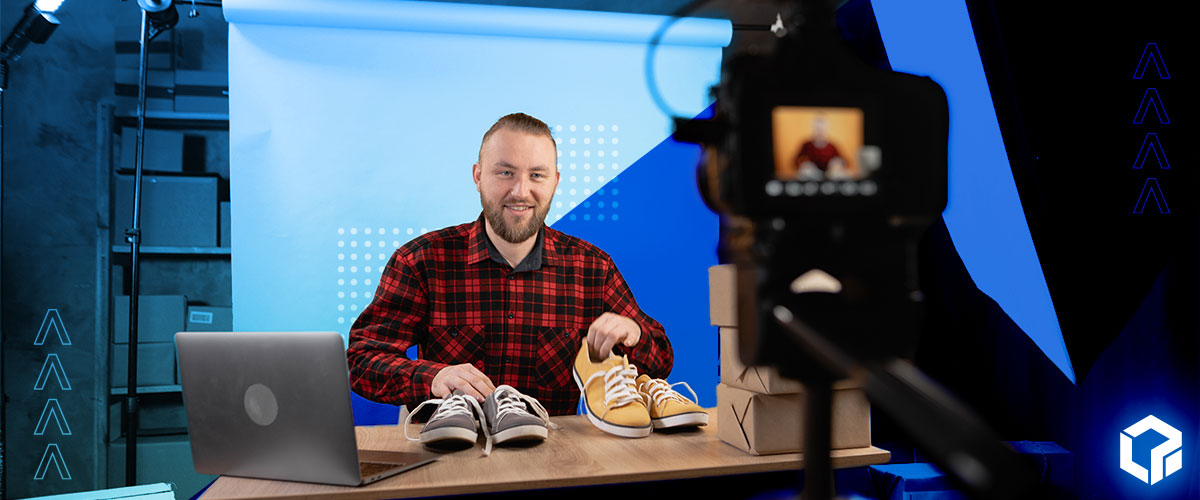Any marketing campaign has an obvious objective; to expand a businesses’ success by bringing in more clientele. The majority of businesses have a specific demographic they’re looking to target based on factors such as age, gender, household size/income, and general interests.
When you give Facebook a marketing budget, this determines how many people will see your ad. If you allow Facebook to target anyone and everyone, you may not see the conversions you’d like to. It’s for this reason that Facebook has created the Custom Audience tool, which allows you to choose your own demographic. When you do this, you’re making the most of your budget, which will ideally earn you a higher ROI. In this article, we’ll go in-depth about how custom audiences work, as well as how you can tailor yours to your advantage.
How Facebook Finds Your Audience
There are a variety of ways in which Facebook can choose the proper audience for your page. One of these, which we’ll discuss later on, is based on the picture of your ideal customer. In this section, however, we’ll explore a few different ways that the Facebook algorithm finds individuals to target.
- Customer list: One of the first things you can do when building an audience is to allow Facebook to find profiles by using the contacts that you received through other avenues. You can upload your email and phone list into Facebook’s tool, which will search its database to see if any of this information matches up to profiles. Once it finds these profiles, they’ll target their feeds with your ads.
- Website traffic: Facebook Pixel, which we’ll be exploring in-depth in a future blog, can monitor users who browse your website. Facebook can pair your ads with individuals who visited certain pages or spent a specific amount of time on your website.
- Engagement audiences: Facebook curates an engagement audience by targeting individuals who have engaged with your content in some way via Facebook or Instagram. This can include users who interact via liking or commenting on posts, or who watch videos. It can also show your ads to users who have visited your business page or clicked on a link.
- Lookalike audiences: This feature is one in which Facebook will take the information of your existing customers and try to match them up with other users that may have similar interests or be in the same demographic. This is oftentimes one of the most successful methods of targeting that one can achieve using Facebook’s algorithm, making it one that we heavily recommend.
How to Choose Your Custom Audience
One aspect of digital marketing that Facebook really shines in is that it allows you to define your ideal customer in detail. Inputting this information gives the site yet another way to ensure that the right people are seeing your product. Audience information that Facebook allows you to input includes the following:
- Age
- Gender
- Location
- Household income
- Interests
- Marital status
Identifying Your Audience
If you’re reading this and realizing that you don’t really know who your audience is, then you’ve identified a major issue in your marketing strategy. It is absolutely essential to know who you’re selling to for your business to succeed. If you truly don’t know your audience, you need to start there before moving forward with your marketing campaign. Below are a few different ways that you can learn more about who you’re selling to.
- Know what you’re selling: Knowing your product inside and out is one of the first steps to knowing who you’re selling to. If you sell an eco-friendly product, you may attract individuals under the age of 30 who are aiming to be mindful regarding how they use their resources. If you’re selling professional shelf installation, you may attract married couples with a high household income.
- Hold surveys: One of the most accurate ways to know who you’re selling to is to go straight to the source. Send out an email or link to a page on your website that asks your customers more about themselves and what it is they’re looking for regarding content and services. You can encourage users to take this survey by offering a discount upon completion.
- Use Facebook: It’s only natural that Facebook has a tool to help you identify who interacts with your page or ads. You can do this via location the insights tab and then clicking on the People tab. This page will display the information you need regarding the type of audience you’re attracting, which will allow you to better optimize your content.
When you know who your audience is, you’ll want to continue to monitor your analytics to ensure that you’re succeeding in attaining and retaining their interests. You may even end up gaining insight regarding types of individuals you hadn’t previously known you were attracting.
Interest-Based Audiences
Yet another option offered by Facebook is the ability to filter your audience according to interests. You can type in options such as arts and entertainment, technology, or education. Facebook may also make suggestions based on the interests you’ve already selected. The thing to know about interest-based marketing is that it really broadens your audience. This isn’t a negative thing, however, and many professional marketing companies actually recommend keeping your audience on the broader side.
Trust the Process
The waiting game is a difficult one, and this is especially true when you’re waiting to turn a profit. It’s ultimately best, however, to allow time for Facebook’s algorithm to do its work as opposed to consistently adjusting your target until you see the results you want. Another reason for giving your campaign time, as well as keeping it broad, is that you may not even know your entire audience yet. There’s a chance that you’ll end up getting business from a group of people you never expected.

How to Engage Your Audience
Why is it so important to know your audience? You want them to buy your product, of course, but you also want to make sure that you’re reaching out to them in a manner they’ll respond to. After all, social media demands that you capture someone’s attention in a mere glance. In this section, we’ll give an overview of how to attract your audience once you identify them.
- Language: It’s important that you’re aware of the tone you should use when addressing your audience. There’s a chance that this may differ from how you’d speak regularly, so it’s important to adjust accordingly. Some demographics may enjoy reading copy that’s light and witty, while others may feel more inclined to enjoy text that’s a touch more serious and informative. You’ll also have to consider the length of your sentences, as well as your vocabulary. The majority of consumers respond best to short sentences that get to the point, though you may experiment a bit to evaluate what gets the best response.
- Pictures and Videos: Visual content is oftentimes one of the best ways to grab the attention of social media users. They tend to receive the most interactions, but how you choose to create imagery may vary according to the user. Images are a great opportunity for using larger text for older users whose eyesight may have declined. Colorful images oftentimes appeal to a younger audience, and short video tutorials can catch a user’s attention—it’s ideal if you find a way to tie these into your product.
- Different Devices: Another thing to keep in mind is the devices your intended client will be using. Mobile phones and tablets are incredibly popular today, and it’s essential to make sure you optimize any content you create to look good on any screen, no matter the size. The number of individuals with the Facebook app is incredibly substantial, so you should be checking everything you post both on a computer and mobile screens.
Professional Management
There’s a fair amount of success that you can achieve using Facebook’s algorithm, but it can be difficult to spend a large amount of time on marketing alone. This is especially true when you have an entire business to run. In these cases, a business can benefit from seeking out the help of an experienced professional. If you’ve begun your Facebook campaign and are now looking for help with your paid social media advertising, feel free to contact the experts at Logical Position with any questions.




